The much talked about and anticipated formation of joint theatre commands to enhance the combat effectiveness of the Indian military is unlikely to happen in a hurry, although a three-pronged process to achieve the final objective of forming a joint fighting force in the medium term is already underway.
That is the major takeaway from last weekend’s Combined Commanders’ Conference (CCC) in Bhopal, capital of Madhya Pradesh, multiple conversations with people in the know indicate. The Prime Minister, Defence Minister Rajnath Singh and National Security Adviser Ajit Doval were briefed about the process of achieving jointness and integration and the eventual formation of joint theatre commands.
In the six months since Gen Anil Chauhan was appointed India’s second Chief of Defence Staff (CDS), three parallel tracks are clearly evident in how the current military chiefs are approaching the eventual objective. The first thread involves creating a sense of jointness among the personnel of the three services, a rather tricky outcome to quantify. The three services also seem to have realised that optics are essential to project an integrated force, so discussions on adopting visible symbols demonstrating jointness are now taking place. So, for instance, an Air Force contingent is likely to be part of an Army Day parade, an Army contingent may be seen at a Navy Day parade, and so on, a pattern to follow.
Similarly, it has now been decided that only one crew of camerapersons drawn from a single service will be assigned to record important tri-services functions instead of having three different crews drawn from respective services. At the Bhopal Conference, since the Indian Navy was the lead Service in organising the event, only a Navy crew was assigned to photograph the VIPs. There is also a proposal to have ADCs for senior military leaders drawn from the Service other than their own. Admittedly these are only token gestures, but steps are seen as essential to start breaking down the rigid silos that have existed in the Indian armed forces for decades.
The second track involves integrating methods, processes, and operating procedures, achieving commonality in logistics and human resource policies, and assessing annual performance, just to mention a few. This strand of physical integration of assets and methods is the most difficult to achieve, but the process has already begun. The third and final step is to create joint structures for actual warfighting, variously described as Joint or Theatre Commands, which seems to be at least 15 to 20 months away. The recent introduction of a Bill in Parliament to empower the government to constitute inter-services organisations and provide disciplinary and administrative powers to their commanders is a step towards empowering the new structures. The Inter-Services Organisations (Command, Control and Discipline) Bill, 2023, was introduced by Minister of State for Defence Ajay Bhatt on 15 March 2023 in the Lok Sabha.
The CDS Gen Anil Chauhan and the three Service Chiefs – Gen Manoj Pande, Air Chief Marshal VR Choudhury, and Adm Hari Kumar – have made sure that they have shared this framework with serving officers at various interactions in Category A training institutions from the Defence Services Staff College (DSSC) to the National Defence College (NDC) and during their field visits. The military brass has also briefed veterans at various interactions to keep them abreast of the plans for integration.
Prime Minister Narendra Modi, who joined the CCC on 1st April – the concluding day of the three-day gathering – listened to and conversed with Commanders-in-Chief and personnel below officers’ rank during his entire time there. His big message to the military leadership was to make sure joint warfighting concepts were imbibed quickly and implemented expeditiously to be an effective force in the fast-changing global situation.
Stressing the need to become self-sufficient in defence manufacturing and optimisation in procurement to avoid duplication, the Prime Minister reportedly instructed the top military leadership and officials from the Ministry of Defence (MoD) and Defence Research and Development Organisation (DRDO) to adopt reforms in their functioning to remain relevant. It was in keeping with the conference theme ‘Ready, Resurgent, Relevant’.
Modi apparently reiterated once again that the military leadership and those in the MoD must encourage more Indian private sector participation in defence manufacturing, shedding their decades-long habit of playing safe by importing defence equipment or placing orders on Defence Public Sector Undertakings (DPSUs). There is no option but to become Atmanirbhar (self-reliant) in defence as far as possible, he is reported to have told those present.
However, the Prime Minister has left it to the military leadership to evolve a roadmap to form the joint commands in a reasonable timeframe. Chief of Defence Staff (CDS) Gen Anil Chauhan led the briefing session for the Prime Minister on the final day, followed by extensive discussion and interaction with commanders.
On the first day, the C-in-Cs deliberated upon different aspects of current and emerging challenges and ways to improve efficiency in procurement and induction of equipment in the three services and achieve smooth absorption of the freshly recruited ‘Agniveers’. On the second day, the CDS briefed Defence Minister Rajnath Singh and updated him and other MoD officials on various coordination issues between the services, Department of Defence, Department of Defence Production and DRDO.
Nitin A. Gokhale

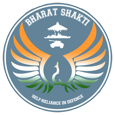


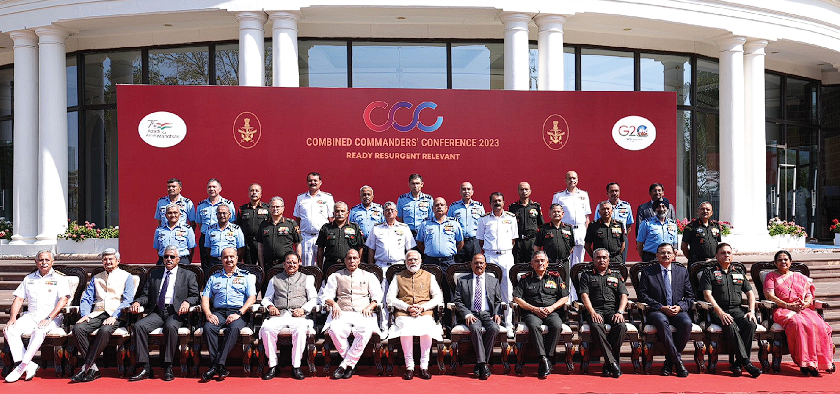



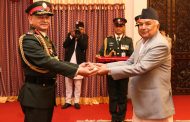
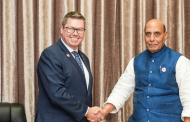

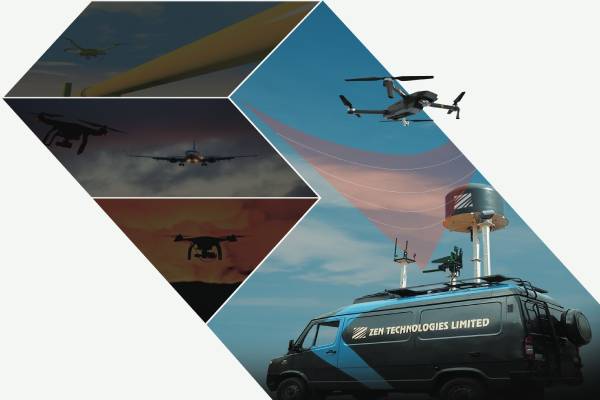



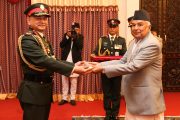

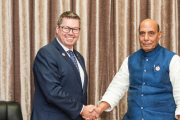



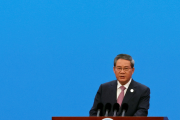

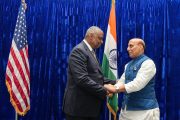

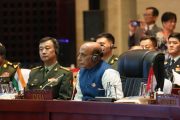





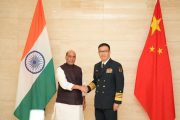

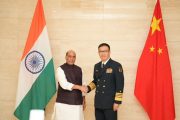

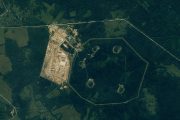

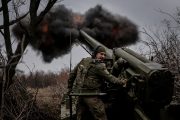




2 Comments
Vinod
It’s a shit. What is this reducing camera crew and putting contingent!! Do you think this is jointness??? Go men check others US , China , Russia ..you will be able to see jointnesss. Its simply jointnesss in ceremonies…hahHaha
Sudarshan Shrikhande
The analysis, above, by Mr Gokhale provides room for optimism that the framework for joint theatres finally seems to be taking shape, even if it is still probably two years away. Nearly four years ago, on this portal, I had suggested that integration should be seen as an input, mainly at levels in New Delhi in terms of Service HQs, HQIDS, MOD and other agencies and ministries, in hyphenated lines and that jointness be seen as a warfighting output that now looks at multi-dimensional strategic planning and operational execution and that CDS, by whatever nomenclature, should be the de facto CDF with a VCDS and VCDF. The first of a series of three articles originally uploaded on 20 Aug 2019 is linked.
(https://bharatshakti.in/cds-from-infighting-to-warfighting-from-integration-to-jointness/.) The thought is repeated here: “Eventually, the CDS and his HQs, with the active lateral frameworks linked to SHQs and of course the JTCs, should be in primary charge of the application of national military force in its multiple dimensions. This process could be completed during the tenure of the second CDS in say, a six-year span that allows for reduced interim disruption in case of a sudden conflict and the orchestrated settling- in of the various JTCs and functional commands.” It could have been accomplished earlier, but given various objections, turf issues, etc., six years had been suggested. So, the period the EIC of Bharatshakti explains above as “15-20 months away” might be nearly five years from the 15 Aug 2019 announcement by the PM and seems a deliberate process. In any case, the Theatre commands that come up may be tweaked in due course as has happened elsewhere including in India itself within single-Services’ commands over decades. Neither policies, strategies nor organisational charts profit by being etched in stone.
On smaller issues, there is both, cause for hope and some concern. That issues of inter-service regulations about conduct and discipline are being passed through a Bill (as for the Army/Navy/Air Force Acts done much earlier) is a good step but one suggests that its absence was not really a deal-breaker for jointness because that would be overstating the problem. However, I am not so certain of the “symbolic” jointness which has been thought about. Of course, symbols are an integral part of a soldier’s and nation’s ethos, but there is a problem in taking symbolism further than necessary. Those in uniform should not automatically conflate symbols and symbolism. On the face of it, say, a naval photo team in Bhopal for the CCC as mentioned above, may seem a good idea. But, if we think a bit deeper, then one of the purposes of joint logistics and smarter administration is to get more efficiency by reducing time, manpower and costs spent on an activity like sending a naval photo detachment from somewhere far away. Why would a small photo team from the considerable Army resources available in Bhopal itself not have sufficed for the simple task of taking photographs and recording an event for posterity?
Could there be a problem of more and more effort and imagination being put into the symbolism of jointness at the expense of substance? The cliché of ‘low-hanging fruits’ should be minimised because there are a lot of serious issues to be resolved, which it is reassuring to know seem to be underway. It is important, however, that we continue to value our symbols but reduce symbolism and keep up the effort to move from “infighting to warfighting” as the title of the 2019 article modestly suggested.
Sudarshan Shrikhande, IN (Retd)